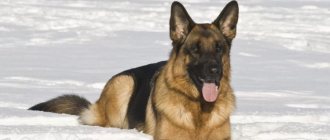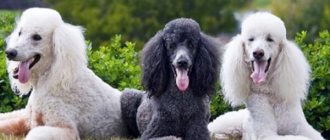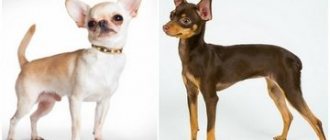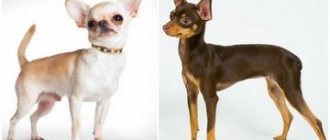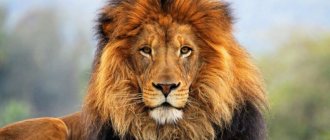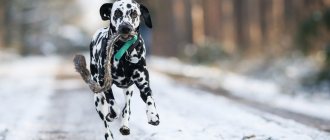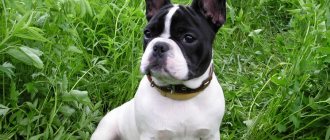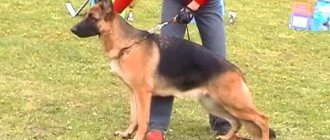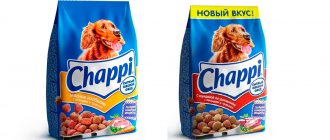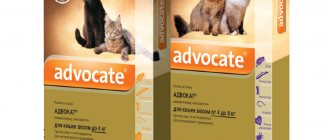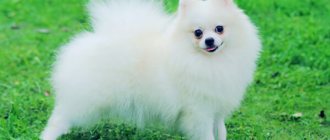The Kangal is a breed of indigenous guard and herding dog from Central Anatolia. Sturdy, strong and hardy, Kangals are highly valued in Turkey and are considered one of the best in the business. Without fear or doubt, in any weather, they are able to carry out their service, protect the herds from wolves, and the property and owner from ill-wishers. It is worth noting that the breed is not numerous, it is recognized only by the Turkish Canine Federation, and its export outside the homeland is prohibited.
History of the breed
Did you know that there is such a Turkish dog breed as the Turkish Kangal? These dogs are guard dogs. There is a town called Kanval, which is located in the Turkish province of Sivas. Some call this breed Anatolian Shepherd or Kangal Karabash. Externally, the dogs resemble mastiffs. Their fur is yellow and brown, and they have a black mask on their face. In Turkey, there are clubs that unite Kangal lovers, for example, ANKADER or Ankara Kangal Derneği, KIF or Cynology Federation Of Turkey. Some dogs have white markings, others do not have a mask.
Kangals are excellent protectors, they are loyal to the family, and behave gently with children and other animals. Their popularity is gradually increasing. There is a version that the Kanls are a tribe that migrated from Turkestan to Anatolia, and there a village called Kangal arose. It still stands today. According to this version, the birthplace of the breed is not Türkiye, but Turkestan.
Hypotheses were put forward about the Abyssinian or Babylonian origin of dogs, but scientists conducted genetic studies and such versions were not confirmed. There was a hypothesis that these dogs are descendants of a couple from India, but scientists consider this version to be frivolous. One thing is clear: the breed is ancient and these dogs have been serving people for centuries. Many countries want the homeland of these wonderful dogs to be theirs.
Some believe that Turkish Shepherds cannot be exported from the country, since this is prohibited by law, others say that vaccinated ones with documents are officially allowed. In the 20th century in the 80s representatives of the breed were taken to America. Dogs are bred there even now. They sell to those who want to buy. If you like dog fights, you can watch them with Kangals on the Internet. Often the rivals of these large dogs are the equally large Alabais.
Origin story
This ancient breed appeared on the territory of Asia Minor back in the days of Babylon. Due to its fighting qualities, it was used as a fighting dog during battles. A dog with an impressive size and strong character has always commanded the respect of a person.
In the absence of battles, the dog was used for hunting, as it skillfully knew how to track and drive wild animals.
Later, Kangal became a good shepherd; his ability to protect the flock from the attacks of wolves and jackals was valued. However, his main task was to protect the flock; he did not look for lost animals and did not drive the herd into a pen.
For many centuries, breeders worked to improve the breed, in the process of which the best and largest types of dogs were involved. In the homeland of the breed - Turkey, it is a national treasure and the export of dogs from the country is prohibited. In Turkey, the breed is called “Karabash”, which means “black head”.
Nowadays this breed is mainly classified as a guard dog.
Description
The Kangal Karabash looks very representative and inspires respect. This is a tall and harmoniously built dog with a strong build, with a powerful body, muscular neck and strong slender limbs. He has a large head, hanging triangular ears, rounded at the ends (when the dog is on alert, the ears are raised), a long and high-set tail, which in a resting state is lowered down and slightly curved, and in an excited state the dog carries it high and curled. back.
The height at the withers of the Kangal Karabash is 71 – 89 cm, weight 34 – 69 kg. The coat of this Turkish shepherd is thick, short, hard and tight to the body, with a thick undercoat. The fur on the neck, shoulders and tail is longer than on the rest of the body. The color of the kangal can be gray-brown, gray-yellow or brown-yellow; there must be a black mask on the face. White coloring is not acceptable for representatives of this breed.
Kangal gives the impression of strength and impressiveness, but at the same time harmony and calm. Its movements are free, energetic and dexterous: when walking, the Kangal Karabash keeps its head and neck in line with its back, which gives the impression that the dog is not walking, but sneaking.
Selection of puppies
Large Kangal puppies are quite clumsy, but this additionally gives them charm. Kids are interested in everything. They are characterized by natural curiosity and full of energy.
You should not leave wires and objects that are valuable to you on the floor. They simply cannot be destroyed. But punishment by beating is contraindicated. It is enough to “turn on” a harsher tone.
The animal itself is quite smart and quite easy to train. Only upbringing needs to be done seriously, and not from time to time.
Such a pet will be a wonderful gift, provided that it is provided with the necessary living conditions. Mainly doubts are caused by large size and great height.
Created by nature itself, the dog, which is considered an ideal protector, needs to regularly go for walks and exercise. They are initially predisposed to developed muscles and are endowed with a strong skeletal foundation.
Character
Agile, energetic, and extremely obedient, the Kangal has earned the most praise from Turkish cattle breeders. Kangal dogs have gained particular fame for their unpretentiousness and efficiency. They are able to carry out their service in the most difficult climatic conditions and even at the cost of their lives. Moreover, compared to many other breeds, Kangals require virtually no care.
Shepherds say that if one sheep is lost from the flock, the kangal can guard the lost sheep for days without food or water. Farmers also appreciate the fearlessness and strength of this dog. It is known that this is the only representative of domestic dogs that can easily strangle a wolf. For such a feat, the owner of the flock always slaughters a personal ram for the dog.
From the point of view of home breeding of Kangal, this is not a suitable breed. This is not just a working dog, it loves its work and needs very heavy loads. Therefore, lying on the rug for days, she will become sad and become aggressive and restless. As a last resort, such a dog can be kept on the territory of a country house, where he can run around and protect “his” large territory. But with all due respect to the owner, this dog is very independent and independent. And even as a puppy, when training, he should be very firmly shown who is in charge.
Character and intelligence
Distinctive character traits of the Anatolian Shepherd:
- Courage. You can leave your household and property to this watchman without hesitation. As soon as he senses the encroachment of a stranger, he will immediately rush to defend the property entrusted to him. Courage also manifested itself in the pastures, when the dog, in an attempt to protect the herd, could resist wolves and often emerged victorious from these fights.
- Balance and stable psyche. Important qualities for a pet. The owners can rest assured that the dog will not even attack a stranger for no apparent reason. Feeling a threat, he will be wary, but in the absence of provocation, he will turn around and leave.
- Independence. Strongly developed leadership qualities do not allow for unreasonable punishment. In difficult situations, being far from the owner, he is able to quickly make the necessary decisions.
- Developed intelligence. They are observant and understand the owner’s commands at a glance. Amenable to training and education.
- Friendliness. Despite its size, the dog is very friendly. Gets along well with other pets.
- Love of freedom. Despite his devotion to his owner, the Turkish Wolfhound is freedom-loving by nature and prefers to live not in cramped apartments, but in the fresh air.
- Wariness. This behavior is due to its natural guard qualities.
Attitude towards children and others
Due to natural wariness, he treats strangers with suspicion. But once he is convinced of a good attitude towards himself and the owner, he will be imbued with sympathy.
The Turkish Kangal dog breed is good-natured and calm towards children, plays with them with pleasure, and tolerates their pranks. In case of danger, he will always be able to protect his little owners. It is not recommended to leave very young children alone with the Kangal; due to its enormous size, the dog can accidentally injure the baby.
Disadvantages of the breed
Karabash is not a dog for everyone. The dog owner himself must be a dominant person in order to gain the dog's acceptance. In addition, he requires competent and consistent education, otherwise he will become an uncontrollable beast, which even the owner will be afraid of. These dogs are sensitive to anesthesia! Since the Karabash is a large, tall-legged and heavy dog, over time it may develop problems with the joints, even dysplasia. The characteristics listed above apply to the breed as a whole, but this does not mean at all that your dog will be exactly like that.
Content
Kangal is not a dog for an apartment or for fun. He should live outside, but not in a cramped enclosure or on a chain. Ideally, the dog should have a job and free range. It is advisable to walk the kangal outside the yard at least a couple of times a week; jogging with a bicycle is encouraged. Kangal closed in the yard becomes unhappy, suffers morally and physically. The dog begins to have problems with joints, appetite, and then behavior.
Education and training
The Kangal, like many other herding breeds, is too independent and independent to be trained in the full sense of the word. He cannot be trained like a service dog, he must be trained and guided like a small child. Mandatory minimum for Kangal: “Nearby”, “To me”, “Cannot” and “Place”. You can’t pamper your dog too much, but you should also be strict in moderation.
If you approach the issue of education and training with your sleeves down, then the first problems will soon begin. The Kangal needs an owner with a strong character and a firm hand, a leader who will not allow the dog to take a dominant position in the family.
Care
Caring for the Kangal's coat will improve the appearance, condition of the skin and reduce the amount of it in the yard. Kangals shed quite heavily, especially in the warm season and during seasonal molting. But if you brush your dog at least once a week, it will always look neat. Periodically, the Kangal needs to look into his ears to make sure they are clean. If a lot of sulfur has accumulated inside, it should be cleaned out. The dog is not bathed often, usually three to four times a year.
Nutrition
In Turkey, they prefer to feed dogs natural food. Cook cereals, add meat or offal and vegetables. Fermented milk products can be given periodically. You can feed your dog ready-made dry food for giant breeds. There is no special need to be smart with your diet. Puppies up to 5 months are fed 3 times a day. If this is not a premium food, then the diet must include food supplements with glucosamine and chondroitin, calcium and vitamin D. From 6 to 8 months, the dog is fed 2 times a day, and after 8 months it is switched to a single meal. Kangal regulates the portion volume itself depending on its own activity and ambient temperature. From time to time, dogs themselves arrange fasting days, refusing food.
Care and maintenance
Kangal is a rather whimsical dog. Certain rules must be followed in order for the pet to live well. It is recommended to walk your dog approximately 3-4 times a day, and these should be very long walks. So if an Anatolian lives in an apartment, it will be quite expensive, since you will have to devote a lot of time to him. That is why it is best to get such a dog if the family lives in a private house. The Anatolian Shepherd can adapt to different outdoor weather conditions. It tolerates both heat and cold snap well. But it would be best to build him an enclosure with an insulated booth.
- Cat claw attachments
- Dog
- Long-eared cats
- Cat meowing
- Alexandrian parrot
- Why does a cat need a mustache?
This dog should not be tied up. She is very smart, so such a gesture from the owner can embitter her. It is necessary to allocate a certain territory for the kangal, where he can run freely. By the way, this dog will perfectly guard a country house.
The Kangal dog breed sheds, like other dogs, in spring and autumn. At this time, you need to try to comb your pet as often as possible to remove the undercoat, which is dying off. The rest of the time, a couple of sessions a week will be enough, but if desired, this can be done more often.
Health and illness
The Anatolian Shepherd is a strong, hardy animal. Adapted to life in harsh climates and has good health. The Shepherd is resistant to diseases, has a strong nervous system and easily tolerates changes in environment.
Due to its large size, the dog is prone to hip dysplasia and volvulus. However, with proper care and a well-designed diet with sufficient calcium content, the percentage of cases is small.
Another disease that breed owners face is a decrease in the pet’s immunity. This happens due to the late development of the immune system. Subsequently, a disease develops - hypothyroidism. The disease manifests itself as profuse hair loss and a lethargic state.
Also, shepherd dogs can develop pathologies of the visual organs - eversion and entropion of the eyelids. If this disease is detected, you must contact a veterinarian and undergo a course of treatment, otherwise there is a risk of getting a corneal disease and losing your vision.
Skin diseases. Insufficient or improper care can lead to skin diseases caused by parasites (fleas, lice, ticks). To prevent this disease, regularly treat the wool with special preparations. Also, skin diseases can be caused by bacteria, fungus, and pathology of the endocrine system. In any case, if you notice deviations from the norm in the appearance or character of your pet, you should contact your veterinarian.
To protect your dog from infectious diseases, you need to get vaccinated in a timely manner. The rabies vaccine is given at 6 months of age.
Lifespan
Research on life expectancy was carried out in 2004. The results revealed that the average life expectancy is 11-12 years. Most often, Kangals die from cancer, due to diseases of the cardiovascular system, upon reaching age.
Feeding
The nutrition of any dog should be complete and balanced. The diet must include natural meat, meat by-products, cereals, cereals and vegetables, with the exception of rice and potatoes, these products should be excluded. You should also not give confectionery and rich products.
Natural food can be replaced with dry food, but only if you prefer premium and super-premium food.
Please note that you must choose only one type of food; you cannot combine natural food with dry food, otherwise it may negatively affect the dog’s health.
The breed is prone to overeating and obesity, so it is important to feed the dog at certain hours; the daily food intake should be approximately 20% of the Kangal's weight. For more detailed information on feeding the Anatolian breed, we recommend that you contact specialized pet stores or veterinary clinics.
Dog training
Kangals are intelligent and obedient animals whose purpose in life is to serve their humans. You can expect brilliant results in training from dogs of this breed.
You can start training from the first months of life; early socialization of the animal will also benefit it. They remember commands well, but to successfully carry them out, training must be interesting, strict, but not cruel for them. Dogs of this breed are well-mannered and neat, they do not raise their voices without a reason, but in serious circumstances you can hear their truly menacing bark. The authority of the owner for the Kangals is undeniable, there is respect, love, and friendship.
Training and education
The Kangal is a freedom-loving dog with a sense of self-esteem. To avoid problems with an adult dog, train it from puppyhood. The owner must become an undeniable authority for his pet and make it clear that the person is the master of the house.
It is recommended that this breed be owned by people who are patient and have experience in training. Education should be strict, but without elements of cruelty. The dog will not tolerate cruelty and will take revenge on the offender.
The Kangal Karabash needs constant communication with its owner, as well as sufficient physical activity. You can start training from 1-2 months of age. Don't forget to praise your pet for its results, but don't scold it if it doesn't work out.
Training will help you get a well-mannered dog with proper behavior. It is advisable that training takes place outdoors at the same time. This will help develop discipline.
Purchase
Buying a Kangal is not easy, since this breed is a national treasure of Turkey and is prohibited from being exported outside the country. However, you can try to find this breed in nurseries in Russia and Europe. You can find a puppy at a bird market or through an ad on the Internet. Owners sometimes post, in addition to photographs, videos of puppies and their parents. But in the case of such a purchase, there is no special guarantee that the animal is a real Kangal. Therefore, it is better to look for a puppy in specialized nurseries, where they will provide a pedigree and detailed information about the maintenance and living conditions of animals of this breed, and also give them the necessary vaccinations.
The price of puppies is quite high - from 60 thousand rubles per puppy. It all depends on the availability of documents, the color of the puppy, and its purebred. But the high cost is compensated by the fact that this breed is an excellent watchdog and working dog, which will provide significant support and assistance to the owner.
Pros and cons of the breed
Before purchasing a Turkish Kangal dog, you should familiarize yourself with the pros and cons of this breed.
Pros:
- Balanced psyche.
- Friendly character.
- Courage and bravery.
- Good guard qualities.
- Beautiful and impressive appearance.
- Endurance and easy adaptation to harsh climates.
- Loyalty and devotion to the owner.
- High intelligence.
Minuses:
- Wariness towards strangers.
- For keeping you need a spacious room, an aviary or a yard.
- Provide your dog with constant physical activity.
- Long walk.
- High price of purebred breed.
- Lots of food.
- Difficult training.
How to choose a puppy?
Anatolian Karabash puppies begin to be disassembled when they reach the age of 2-2.5 months. When deciding to start breeding Kangals, you need to familiarize yourself with the documents of the puppies’ parents. When considering a litter, choose a puppy: the one you like; tall, well built; with sparkling eyes and a wet nose; actively eating and playing with brothers and sisters.
